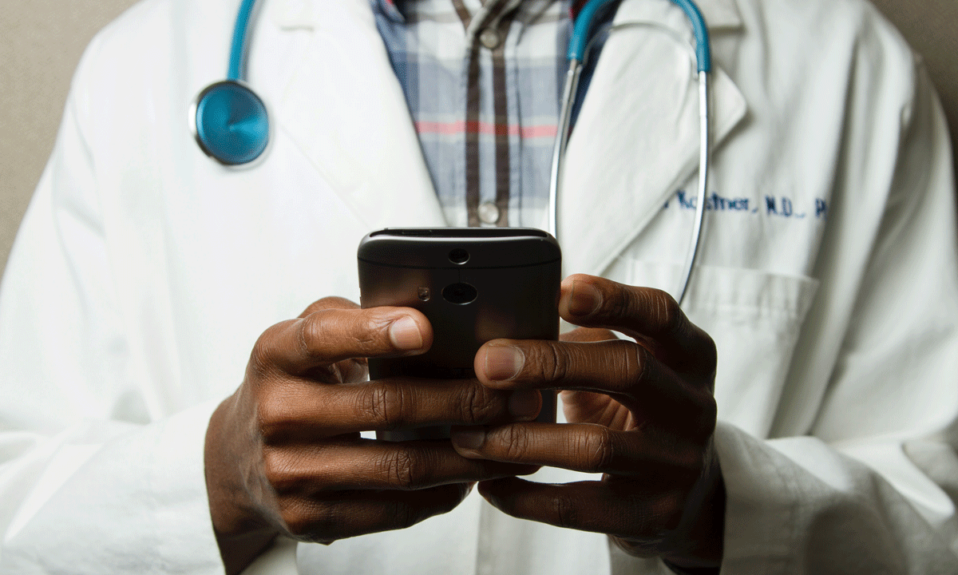Boulder Care is among the organizations using digital technology to combat the opioid epidemic
By Jason Langendorf
August 15, 2020In 2017, after reporting a record-high 42,000 opioid overdose deaths in the United States over the previous year, the U.S. Department of Health and Human Services (HSS) declared a public health emergency.
The response was significant, as legislators delivered state grants totaling $485 million (in addition to federal measures taken in the 2016 Comprehensive Addiction and Recovery Act) and codified new research, regulation and prioritizations of tactics in combating the opioid crisis. Addiction care professionals have since made some inroads, but they continue to struggle with the scale and dynamics of the epidemic, including providing sufficient access to treatment for high-need patients in underserved communities.
Stephanie Papes believes her company is part of the solution.
Papes is the founder and CEO of Boulder Care, a telehealth company and “digital clinic” specializing in treatment for opioid use disorder. Boulder is helping to pioneer an approach to addiction care that breaks traditional molds by meeting patients where they live and providing treatment on their terms. At the crux of its telehealth model are an online platform, customized and comprehensive caregiver consultations and the prescription drug buprenorphine (Suboxone). The company isn’t so much disrupting the industry as it’s modifying conventional delivery methods in an effort to remove certain longstanding barriers and reach more patients.
“The big part of our mission is expanding access to high-quality care, and in a way that actually is sustainable,” says Papes. “We know that addiction is a chronic condition, but today we’re sort of treating it like something that can be cured. You go away for 28 days [to a treatment facility] and are expected to come back with no support, when we know this is something that may take months or years, just like any other chronic condition. But with a treatment model that actually fits into people’s daily lives, we can do so much over time to help them get well.”
Heroin, fentanyl and prescription painkillers are at the root of the opioid crisis, of course, but the epidemic has grown into something more daunting—a hydra of access barriers, government regulations and caregiver shortages. Under conventional norms, individuals who seek treatment often must overcome the public stigma of illicit drug use, travel long distances to care facilities and then figure out how to pay for treatment. For caregivers, the process of becoming licensed and maintaining compliance to prescribe buprenorphine—an FDA-approved drug that has become the industry’s gold standard in treating opioid and heroin addiction—was theoretically intended to prevent abuse.
You go away for 28 days [to a treatment facility] and are expected to come back with no support, when we know this is something that may take months or years, just like any other chronic condition. But with a treatment model that actually fits into people’s daily lives, we can do so much over time to help them get well.”—Stephanie Papes, founder of Boulder Care
But in practice, it has become a series of bureaucratic hoops to jump through. The result has been a morass of inaction. According to data from the Substance Abuse and Mental Health Services Administration (SAMHSA), approximately “400,000 people aged 12 or older in 2018 with an opioid use disorder received illicit drug use treatment at a special facility in the past year, or 19.7 percent of those with an opioid use disorder.” In other words, roughly four out of five Americans in need of opioid addiction care aren’t receiving it at an onsite treatment center.
“Today, if a potential patient wants to obtain an illicit substance, it’s incredibly easy,” says Papes. “I know where they can get it, they can get it quickly, the experience is nonjudgmental. Often, there’s even a consumer experience where they can get it packaged up where it’s sold online. [Traditional] treatment is the exact opposite. To put someone through so many hoops in order to start on medication treatment, we’re making heroin an easier alternative.”
It’s that stark reality that may be opening the eyes of lawmakers and caregivers to new treatment options. A 2018 study concluded that telehealth “can dramatically expand rural access to drug treatment services by ‘virtually’ linking patients to clinicians in other part of the country. These technologies can mitigate workforce shortages, geographic isolation, and funding shortfalls that often plague rural areas.”
In 2018, the Substance Use Disorder Prevention that Promotes Opioid Recovery and Treatment for Patients and Communities Act (SUPPORT) was passed to provide more than $3.3 billion in funding, require Medicaid and Medicare reimbursement to facilities for medication-assisted treatment and expand access to care, including special provisions addressing telehealth services. Skepticism about the perceived limitations of telehealth—less initial oversight, potential for testing abuse, less direct disruption of existing patient patterns—is gradually giving way to the realization of a need for innovation in the face of an overwhelming opioid-treatment access gap.
“We look at it philosophically from a harm-reduction approach and incremental gains over time,” says Papes. “If we can get someone to low-barrier care and make it hard for them to leave, it gives them the support they need as they start introducing small steps in behavioral change. And even if they don’t or it takes quite some time, getting someone on buprenorphine reduces all-causes mortality by 50 percent. So right away you’re keeping someone safe. And after just six months of retention with some adherence, we see dramatic decreases in emergency department utilization, in-patient days. You can’t introduce counseling or motivational interviewing or behavioral-change interventions if someone isn’t in the program or if they’re not alive. That’s where this incremental care makes a lot of sense just in the practical application in our population.”
Another enormous development has recently thrust telehealth to the industry fore: COVID-19. With public restrictions and concerns of exposure risk handcuffing traditional treatment facilities, all individuals seeking treatment—not only rural residents, the elderly and those with disabilities, for instance—are suddenly discovering companies such as Boulder to be a sensible option for addiction care. Additional relaxation of government regulations during the pandemic are allowing telehealth operators the flexibility to treat more patients, faster.
“We are empowering medical providers to serve patients wherever they are during this national public health emergency,” says Roger Severino, the director of the Office of Civil Rights (OCR) at the HHS. “We are especially concerned about reaching those most at risk, including older persons and persons with disabilities.”
Although it was brought about in part by dire circumstances, Papes is encouraged by the increasing recognition of telehealth as an accepted addiction-treatment option. Her hope is that the effectiveness of telehealth services like Boulder Care during the coronavirus pandemic will persuade health officials to consider loosening, on a long-term basis, restrictions that have prevented the addiction-care system from connecting with patients in need.
“In theory, it’s temporary,” Papes says. “But we’re all very hopeful that because they’re so successful and it’s driving adoption of telehealth in populations that may not have considered it before that it may become permanent even once COVID is over.”













